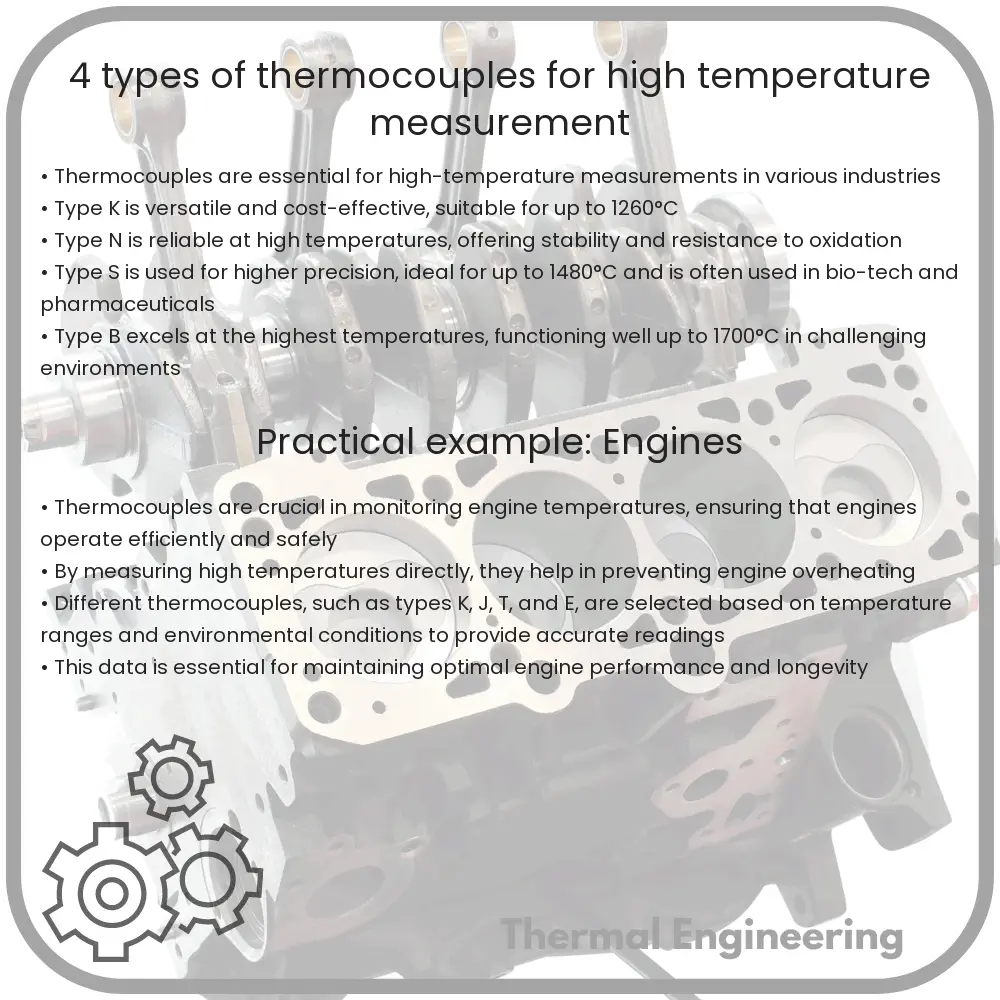Learn about thermocouples, their types, composition, and applications for high-temperature measurement in industrial settings.

Understanding Thermocouples for High-Temperature Measurement
Thermocouples are a widely used type of temperature sensor for measurement and control and are particularly common in industrial settings. These devices consist of two different types of wires, joined at one end, which produce a voltage when heated that can be correlated directly to temperature. Thermocouples are favored for their ability to measure a wide range of temperatures, especially high temperatures. Below, we explore four key types of thermocouples used in high-temperature applications.
1. Type K Thermocouple (Nickel-Chromium/Nickel-Alumel)
- Composition: This type consists of a nickel-chromium alloy wire (chromel) and a nickel-alumel alloy wire.
- Temperature Range: -270°C to +1372°C (-454°F to 2501°F).
- Applications: Due to its reliability and precision within a vast range of temperatures, Type K is extensively used in ovens, furnaces, and other industrial processes.
- Advantages: It is relatively inexpensive, widely available, and provides strong accuracy and repeatability in measurements above 0°C.
2. Type J Thermocouple (Iron/Constantan)
- Composition: It uses iron and constantan (a copper-nickel alloy) wires.
- Temperature Range: -210°C to +1200°C (-346°F to 2192°F).
- Applications: Commonly used for vacuum, oxidizing, reducing, and inert atmospheres, but the presence of iron limits its usage in high-humidity environments due to rusting.
- Advantages: Good sensitivity (approximately 50 µV/°C), making it suitable for a variety of applications.
3. Type S Thermocouple (Platinum Rhodium/Platinum)
- Composition: Comprised of platinum-rhodium (10% rhodium) and pure platinum.
- Temperature Range: Up to +1768°C (+3214°F).
- Applications: Typically used in bio-pharmaceutical processing and in kilns for firing ceramics due to its high level of stability and accuracy under severe environments.
- Advantages: Highly stable and suitable for very high temperatures with good repeatability.
4. Type R Thermocouple (Platinum Rhodium-13%/Platinum)
- Composition: This thermocouple type has a similar make-up to Type S but uses a slightly higher percentage of rhodium in the platinum-rhodium alloy wire.
- Temperature Range: -50°C to +1768°C (-58°F to 3214°F).
- Applications: High-temperature applications in industrial and laboratory environments.
- Advantages: Provides very accurate readings and good stability at high temperatures, and is less susceptible to contamination compared to Type S.
To ensure accuracy and longevity of a thermocouple, it is crucial to choose the right type based on the specific environment and temperature range of the application. In addition, installation considerations such as the length of the thermocouple wires, the type of thermowell used, and proper calibration are vital to get precise temperature measurements.
In conclusion, understanding the properties and appropriate usages of different thermocouple types is essential for effective high-temperature measurement, ensuring both the safety and efficiency of industrial processes.